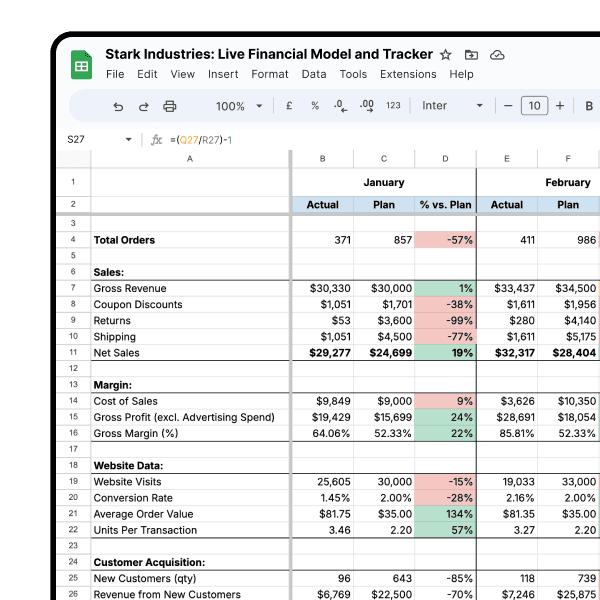Best Practices
May 3, 2024
TLDR
Data is valuable for e-commerce businesses but they often lack the structure to use it. This article offers a three-step framework to turn data into sales: identify who in the company needs data insights, establish procedures for collecting and using data, and implement best practices such as CEO involvement and data dashboard creation. By following these steps, e-commerce businesses can leverage data to make better decisions and ultimately boost sales.
Every company wants to use data insights to boost sales, but most lack the framework to do so. How does an e-commerce brand get started setting the foundations to drive greater sales with their data?
In a recent webinar with the Limited Supply community, we had the honor of having Kate MacCabe, founder of Flywheel Strategy, share her framework on how best to approach building a data-driven strategy. She draws on her experience working with billion-dollar brands in the past, and more recently, her years of consultancy work on brands of all sizes.
Kate uses the analogy of an iceberg to describe data - for most businesses, getting the data is not the main problem. The bigger challenge is in leveraging and finding insights to turn into actionable steps.
“10% of the problem is capturing the data, but under the surface, there is all of the work to do in terms of how do I incorporate this into my day to day in a way that it's going to just naturally drive the progress, the revenue, the growth, and accelerate the business, versus being an untapped potential that's sitting there at your feet every day.” - Kate MacCabe
Three Pillars of Success: People, Processes, Practices
In order to unlock these data insights, Kate outlines the three pillars of success - people, processes, and practices - as below:
People: Who are you enabling in your business? Be it in a team of 1 or 1000, for whom are you unlocking the value of your data?
Processes: What is your day to day rhythm? Where is data showing up in your decision making touch point meetings?
Practices: What are some of the best practices that brands and companies leverage? What are some tools that can help?
In large organizations, typically the product management team is the people, the company roadmap is the process, and a centralized place for data insights is the practice.
A survey Kate conducted with several incubator programs about the digital health of their business showed that 100 percent of the survey respondents reported that they did not have a product management team, a company roadmap, or a centralized place for data insights.
Who are the People who need Data Insights?
Kate shares a standard organizational chart outlining the roles and responsibilities every company needs.
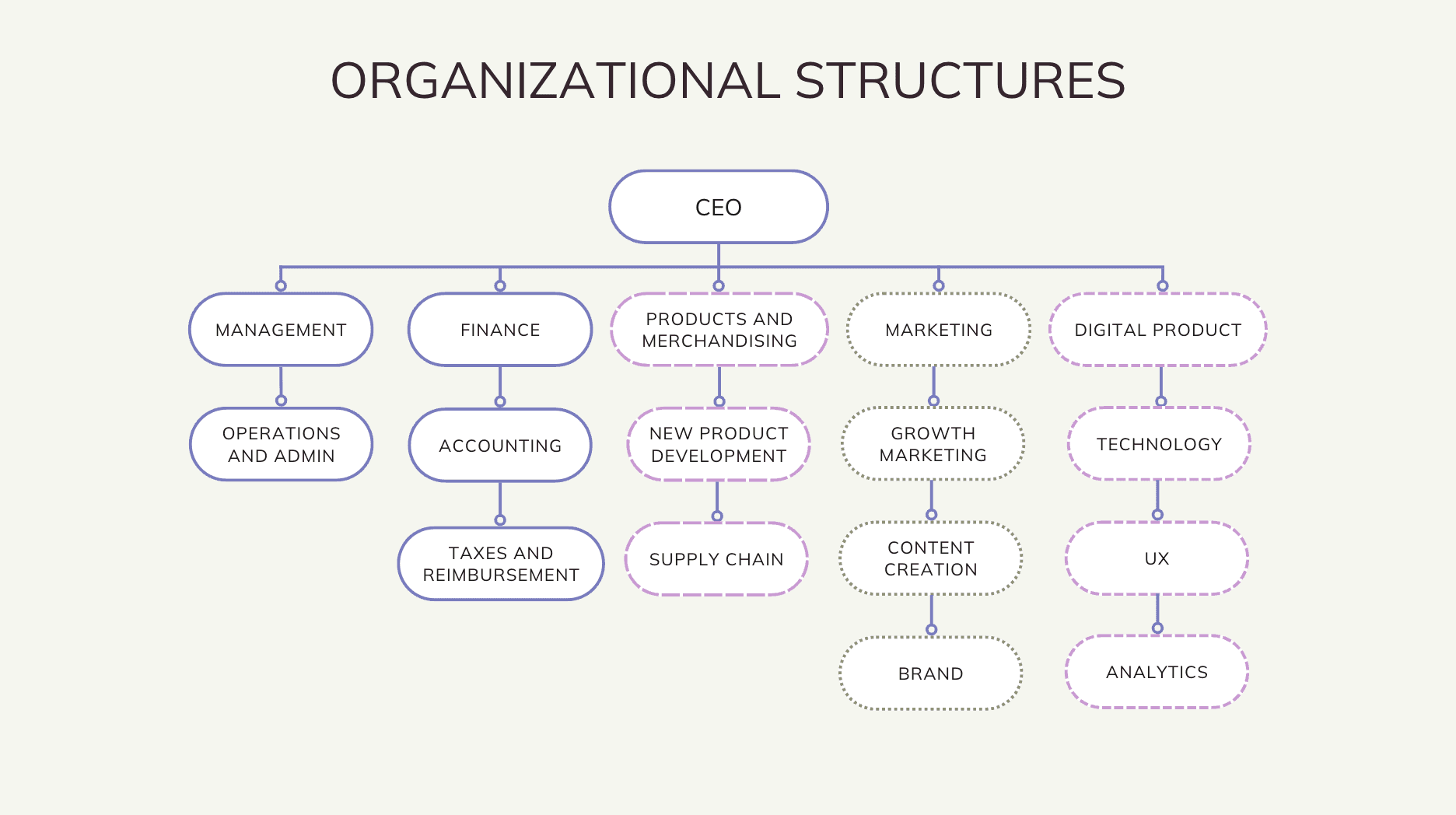
“All of these are functions of your business that need attention, even if you’re a company of one, five, 10, or 20,” Kate emphasizes. She recommends color coding to indicate who owns what parts of the business, and using solid lines to show full time support as opposed to dotted lines indicating part time or fractional support.
Different roles would require different kinds of data insights. For example, someone in charge of digital product would be looking at the website, app, loyalty programs, subscriptions and so on, and would need insights on the performance of these digital experiences as they impact revenues. On the other hand, someone in charge of product and merchandising would need to look closely at sell-through rates, product bundling, cross-selling and upselling, and so on to increase revenues, lower costs and ensure supply meets demand.
In particular, analytics is not something to be outsourced to junior roles. Kate recommends that CEOs dedicate 10 percent of their time, or four hours, every week towards analytics.
What are the Processes Involved to Obtain Data Insights?
When dealing with data, there are three key components to keep in mind:
What are your data sources?
What are your data metrics?
What are your data definitions?

Kate recommends that CEOs sit down every quarter to look at data mapping and deciding on which data sources and definitions the company wants to use as its source of truth for which metrics. “Do this early and often,” she says. “As a business decide, what do you want the source of truth to be for your metrics?” At Brooklinen, her previous company, they had an analytics lead who ran this exercise with their team to unify the definitions, a process which took 3 to 6 months.
Not only does maintaining a document of data definitions free up time within the company by avoiding back and forth discussions, it also serves as an easy onboarding tool for new hires, or new agencies who come onboard to work with your business.
How do I Build a Dashboard for my Business?
How do you bring your data to life? Kate recommends starting out by building a wireframe.
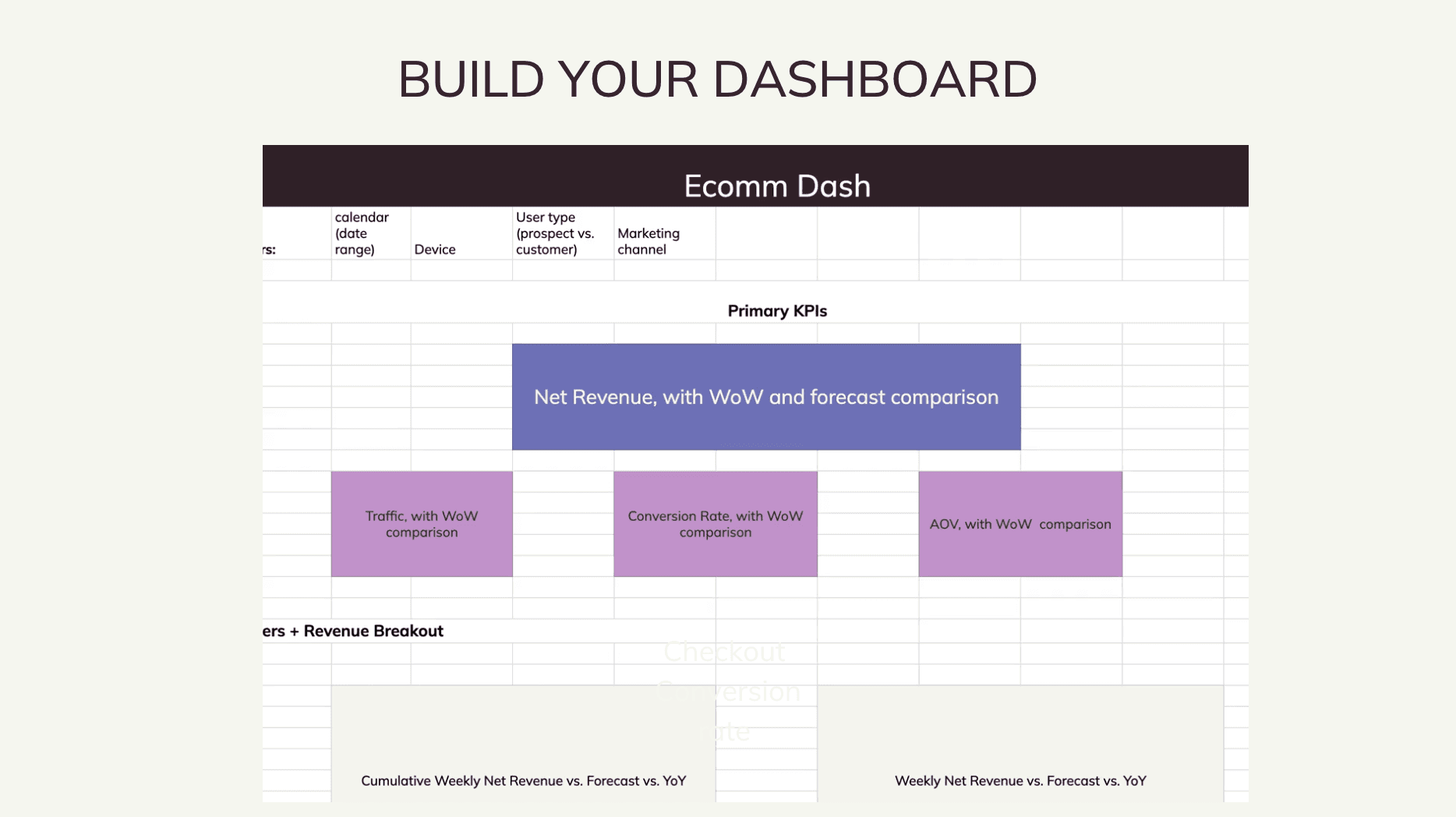
“Data is a digital product; in my mind, it is a digital product for your internal teams,” says Kate. “The higher the quality of your digital product of analytics, the higher the value of your data insights for your business, and the sooner you will find those sales unlocks.”
The overarching goal for businesses is usually revenue; there may be three KPIs that feed directly into that goal.
It may take weeks to work out this wireframe; it may take months. But Kate mentions it is essential to take the time needed to figure out what exactly is the right hierarchy of information that will enable you to run your business effectively.
In the beginning, updating this wireframe could be a manual process. Once you have figured out what the most important metrics are, you can look at automating the process, and freeing up your time to focus on deriving insights and making strategic decisions.
Improve your DTC game. Sign up for weekly tips.
What are the Best Practices of Businesses to Maintain Digital Health?
Kate goes in depth into how to review your digital commitments, and how frequently you should review them.
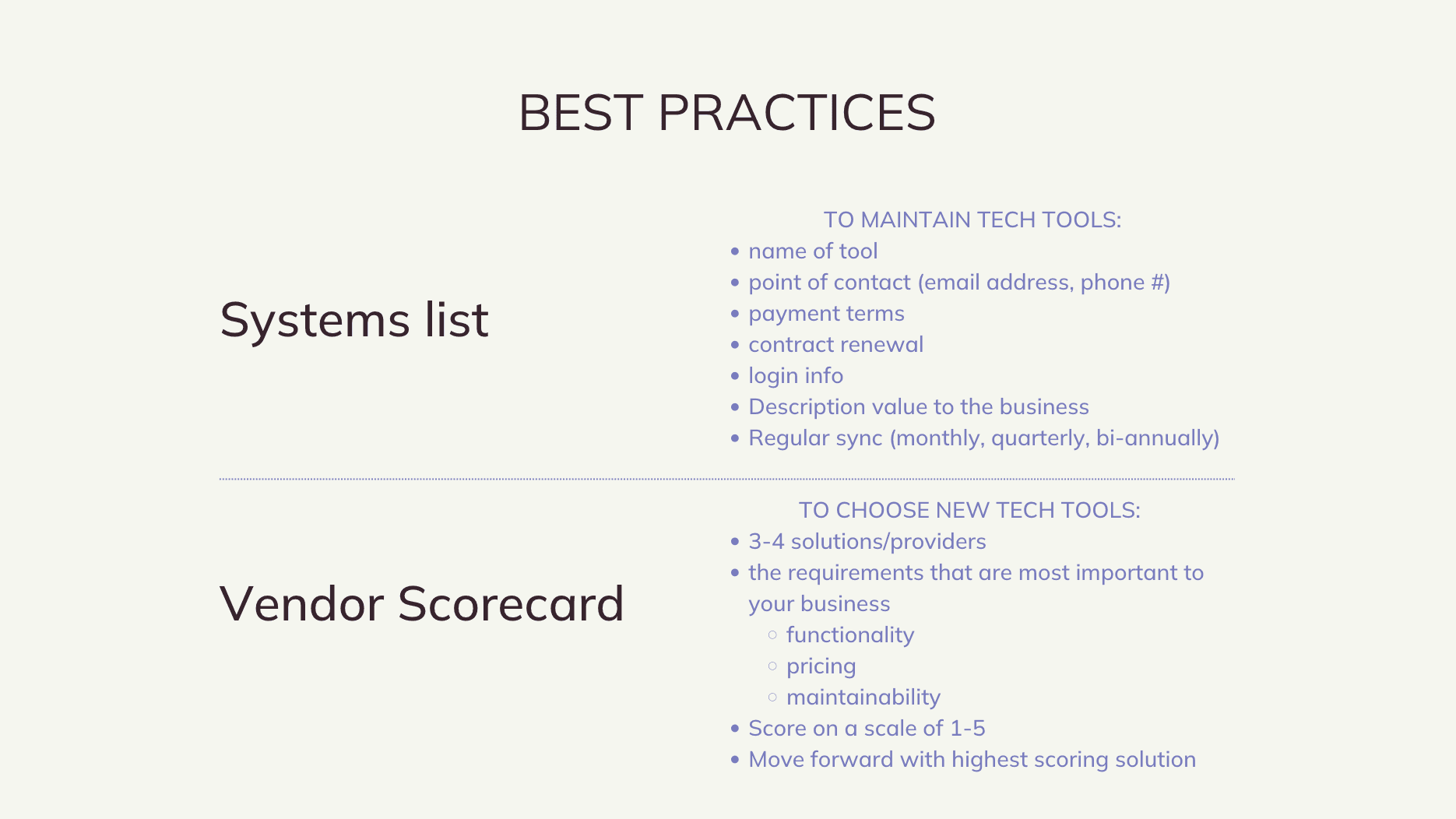
She recommends doing a monthly, quarterly or bi-annual audit of the tech tools your company is using, to update if there had been any changes to your point of contact or your subscription terms, and to review if your company still needs that tool or if it should be looking at more updated, suitable solutions.
“What is regularly taking me a lot of time to do? That’s my signal to go and find a technology that can automate this.”
Kate recommends doing a monthly sync with your Tier 1 platforms, which creates a strategic partnership. “When you bring in a technology, they have their own product and engineering team, and if you can build a strong relationship with them where they’re helping you get as much value as you can out of their platform [and vice versa], all of the sudden you have a technology company who’s building out features that you need… because you invested in that relationship.”
How do I use Data Insights to Drive Sales?
All of the above steps lay the groundwork for your ultimate goal, which is sales. The clearest way to achieve this is through conversion rate optimization. Kate recommends reviewing your store’s e-commerce funnel, and shares industry benchmarks as typically seen by the brands she works with.
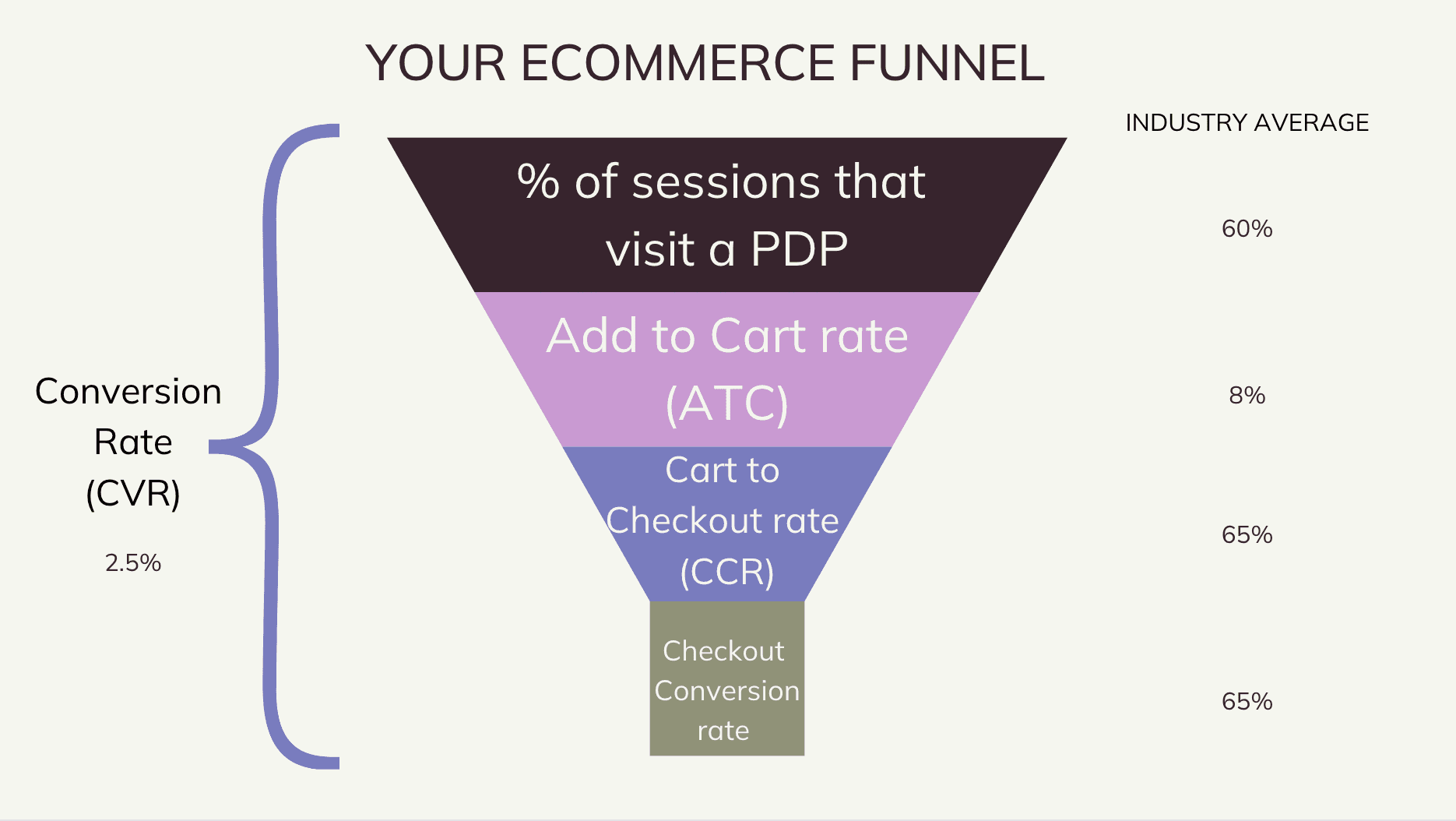
When reviewing the different stages in your conversion funnel, focus on the areas where your store is performing below the industry average. Once you fix that problem, you’ll see your overall conversion rate increase.
Kate wraps up the presentation with an example of how her consultancy helped a brand hit 122% of their sales target during Black Friday.
Watch the full video below:
Kate MacCabe founded and now leads Flywheel Strategy, after building, leading and scaling digital centers of excellence for retailers and brands, for the past 15 years. Drawing on Kate’s background in e-commerce goods and services, Flywheel creates scalable solutions that empower teams to shape the what, why and how for new features within companies that regularly appear on Best Of lists for Forbes, Times, and Fast Company.
